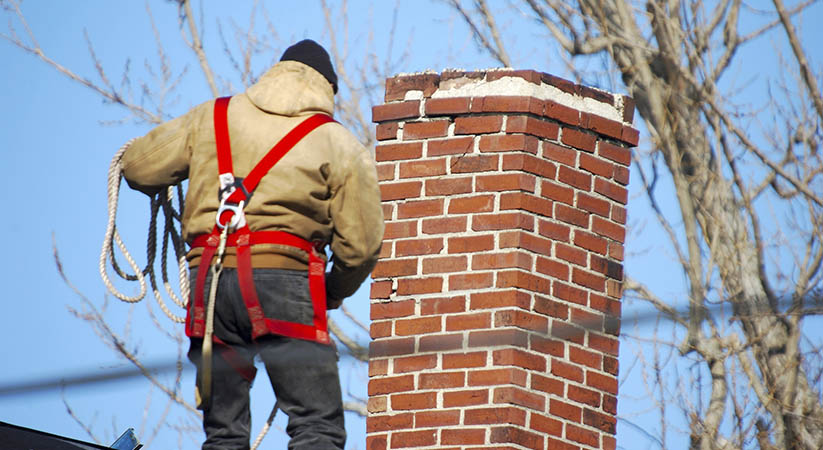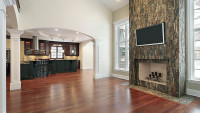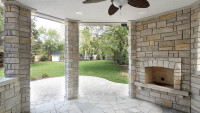Every time you burn wood, creosote is produced. Creosote is the combination of tar, creosote, and soot, which are the byproducts of wood burning. According to chimney cleaning services providers, there are three main degrees of creosote:
1stDegree
1st-degree creosote contains a high percentage of soot. Due to this, you can easily remove it using your chimney brush. 1st-degree creosote comes about when you burn seasoned wood. When you burn the wood, fire receives the needed air and the heat of the fire warms the flue.
Since seasoned wood has low moisture content, the wood components are burned up instead of going up the chimney.
When you are looking to hire a professional to clean the chimney, this is the type of creosote that you should want the professional to find in your home. Since it’s easy to remove, the professional will have an easy time getting rid of it.
2nd Degree
On first look, 2nd degree creosote resembles shiny black flakes. This creosote is produced when air is restricted. This type is common in wood stoves and fireplaces that have glass doors.
Since the flakes of second degree creosote contain hardened tar, it’s hard to get rid of the creosote. Unlike the 1st degree creosote that you can easily remove even by yourself, you will need to hire a professional to remove this one.
The professional uses a rotary loop to remove the creosote. The loop consists of a stainless steel cable that is attached to a hub. The hub has metal rods that are turned by a powerful drill.
When you turn on the rotary loop, you easily remove the stubborn creosote leaving your chimney clean and safe.
3rd Degree
When your chimney has this type of creosote, it looks as if it has a tar coating running down the insides of the chimney. This tar is highly flammable hence you should be ultra cautious as it’s known to cause chimney fires.
This type of creosote happens when you go for a long time without cleaning your chimney. When you clean the unit, one creosote layer hardens and it’s recoated by another when you use the wood stove.
In the event the inner layer catches fire, the creosote burns extremely fast to the extent that you don’t salvage anything in the house.
In addition to failing to clean the chimney as regularly as you are supposed to, another reason why creosote tends to build up to extremely high levels is when:
- You burn unseasoned wood
- You have an oversized flue
- There is insufficient amount of combustion air that is getting to the fire
- The flue isn’t warmed sufficiently
It’s hard to remove this type of creosote even when using power tools. Most of the chimney cleaning professionals use chemicals. While the chemicals are effective, the best remedy for the problem is to replace the chimney liner.
How do you minimize creosote buildup in the chimney?
There are plenty of ways in which you can minimize the building up of creosote in your chimney. Some of these ways include:
- Avoid burning slow and smoldering fires. This is because the by-products of combustion tend to burn in a hot, clean fire. The products go up the flue, contributing to the collection of creosote deposits.
- You should avoid burning newly cut, wet firewood. This is because the wood burns with a lot of soot which puts your chimney at the risk of accumulating a lot of creosote.
- The best way out is to burn seasoned wood. This is wood that has been air dried for at least six months. The wood burns hot, producing little soot and creosote.
- For you to ensure sufficient air circulation, you should ensure that the chimney is properly insulated. This calls for you to hire a professional who will insulate the unit and fix any other issues that might be there.
- Finally, you need to clean the chimney regularly. This goes without saying. You need to clean your chimney at least once a year. You can clean the unit by yourself if you have the skills, but if you have never done it before, let an expert chimney sweep Bowie help you out.





